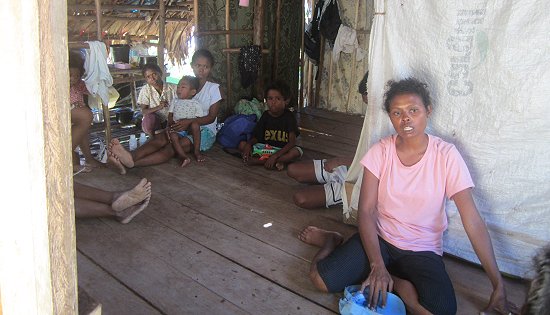Helping
Yolanda-displaced indigenous people

By JAZMIN BONIFACIO
July 23, 2014
ISABEL, Leyte – The
National Commission on Indigenous People (NCIP) held consultations
with Bajao community in Isabel, Leyte on post-Yolanda reconstruction
and relocation plans.
It was learned that eight
months after typhoon Yolanda struck Leyte, they are still struggling
as they try to rebuild their lives, have marked with continuous
displacement and rampant poverty.
To recall, Bajao people came
to settle along a coastline of private land in Sitio Pasil, Barangay
Marbel in Isabel, Leyte after they escaped the conflict and harsh
living conditions in Mindanao in 1990’s. Their sources of income in
Isabel are fishing and selling used clothes in the town’s market.
The Bajao people are the
most disadvantaged indigenous groups, with high illiteracy and
unemployment rates and low income. Traditionally, have been sea
dwellers, living on narrow boats and visiting dry land only to trade
fish, pearls and sea cucumbers for rice, drinking water and other
staples. Although many of them were forced to adopt sedentary
lifestyles, however, their unique way of life is still strongly linked
to the sea as their income largely depends on fishing and free-diving,
which means they inhabit the shorelines where they build houses on
stilts.
According to Hazel Torrefiel
of NCIP, they are trying to look into the welfare of the Bajao Tribe,
after the storm, they were forbidden to rebuild their homes by the
land owner and the local government for the very reason that the
coastal areas or unsafe zones were initially designated as 40 meters
‘no build zone’ and later downgraded to ‘no dwelling zones‘.
It was learned that the 75
Bajao families were temporarily permitted to stay in an adjacent
private land, with no legal rights and no security of tenure.
NCIP discussed proposed
relocation plans with members of the Bajao community and to help relay
their messages to local authorities.
“The Bajao were reluctant to
move since the relocation site was too far from the coastline and the
towns market where they make their living,” Torrefiel said.
Torrefiel stressed that
special attention should be given to indigenous people. In terms of
shelter and relocation, taking into account indigenous people culture
and maintains their traditional way of life.
And for the Bajao according
to Torrefiel, their culture is intrinsically linked with the sea and
the shoreline and disaster response measures should be sensitive to
their culture, tradition and beliefs.